This article will explain how to read a syringe. As a nurse, it is very critical you understand how to properly read a syringe. There are many different types of syringes available for usage. The nurse will need to select the appropriate syringe size based on how much of a medication is ordered by the physician.
For example, if a physician orders 0.25 mL of a medication, the 1 mL syringe is the best for achieving this dose because it allows you to measure very small amounts of a medication.
Therefore, I will be discussing how to read 5 different types of syringe you will encounter as a nurse, such as:
- 10 mL
- 5 mL
- 3 mL
- 1 mL
- 100 unit Insulin
Video on How to Read a Syringe
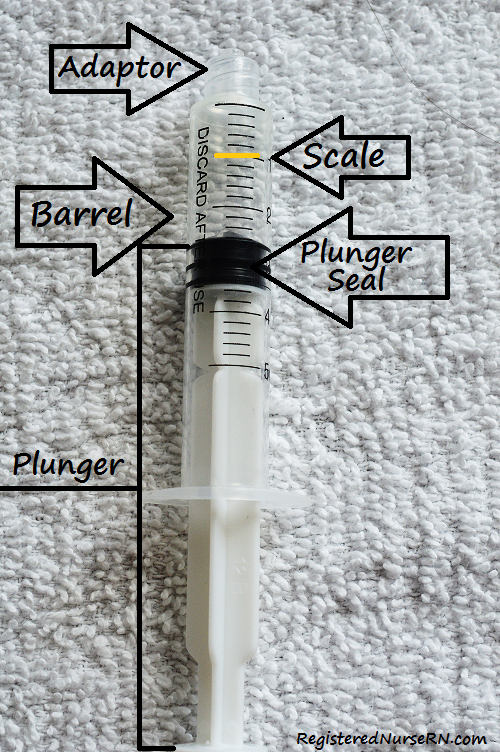 Parts of the Syringe
Parts of the Syringe
Adaptor: this is the area where you screw on a needle (if you were giving an intramuscular injection etc.) or onto the IV hub of the patient’s IV to give a medication.
Barrel with a readable scale: this is where you will match up the top of the plunger seal (see image at the side) and the line on the scale with the amount of medication you need to administer. Most scales on the barrel are in mL (milliliters) or cc (cubic centimeters). If you are administering insulin you will use a syringe that measures in units. NOTE: always determine the capacity of your syringe because each syringe has different measurements on its scale..hence each line represents a different increment of measurement (more information on this below).
Plunger: assists will drawing up and injecting the medication
Tip: If you hear someone say give “10 cc” of this medication, cc is the same as mL. Therefore, 10 mL equals 10 cc.
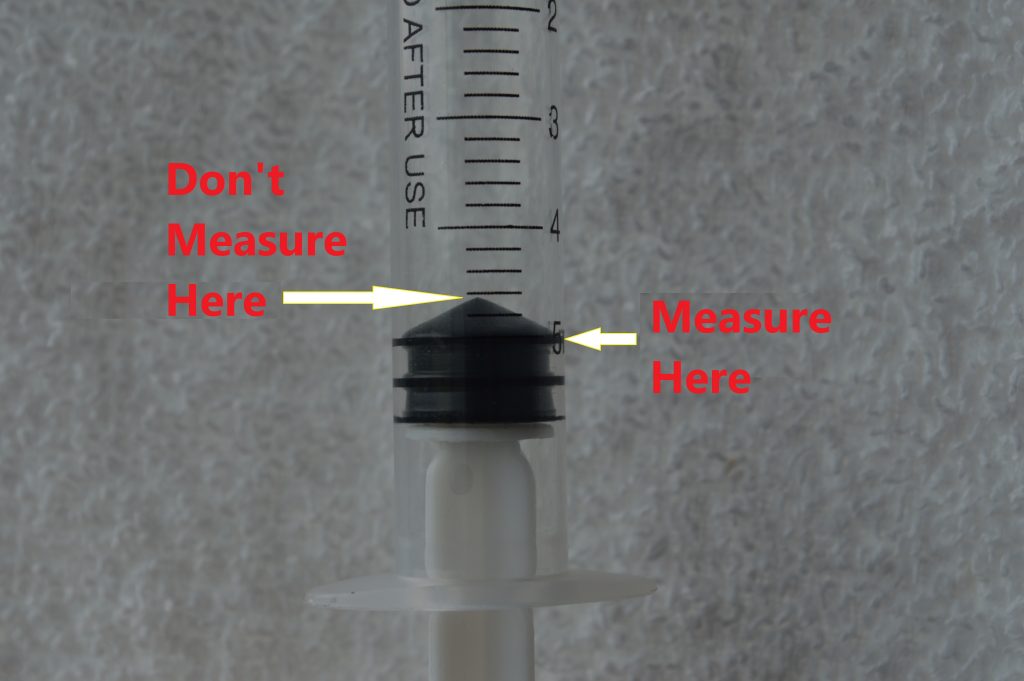 Reading a 10 mL Syringe
Reading a 10 mL Syringe
This is a 10 mL syringe. Each line measures in 0.5 increments until it reaches a total capacity of 10 mL.
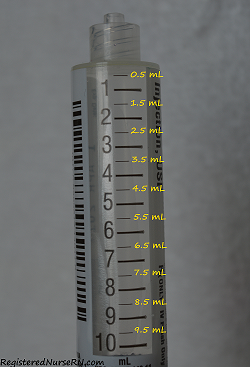
- TEST YOURSELF: How much is in this 10 mL syringe? (answer key below)

Reading a 5 mL Syringe
This is a 5 mL syringe. Each line measures in 0.2 increments until it reaches a total capacity of 5 mL.
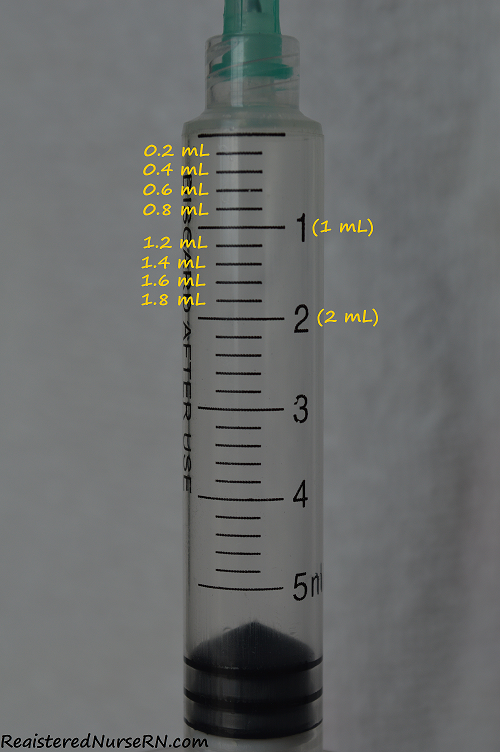
- TEST YOURSELF: How much is in this 5 mL syringe? (answer key below)

Reading a 3 mL Syringe
This is a 3 mL syringe. Each line measures in 0.1 increments until it reaches a total capacity of 3 mL.

- TEST YOURSELF: How much is in this 3 mL syringe? (answer key below)
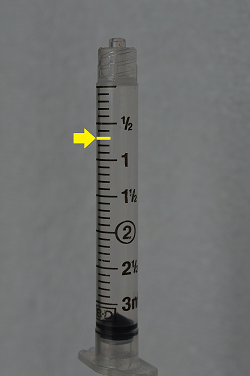
Reading a 1 mL Syringe
This is a 1 mL syringe. Each line measures in 0.01 increments until it reaches a total capacity of 1 mL.

- TEST YOURSELF: How much is in this 1 mL syringe? (answer key below)
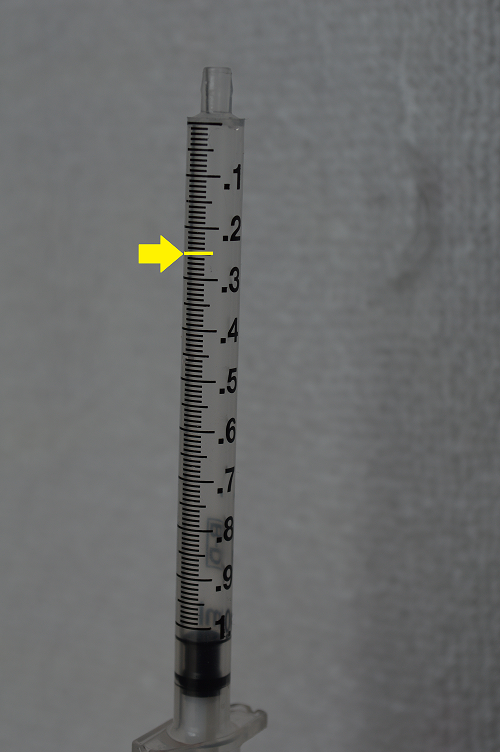
Reading a 100 unit Insulin Syringe
This is a 100 unit insulin syringe. Each line measures in 2 increments until it reaches a total capacity of 100 units.
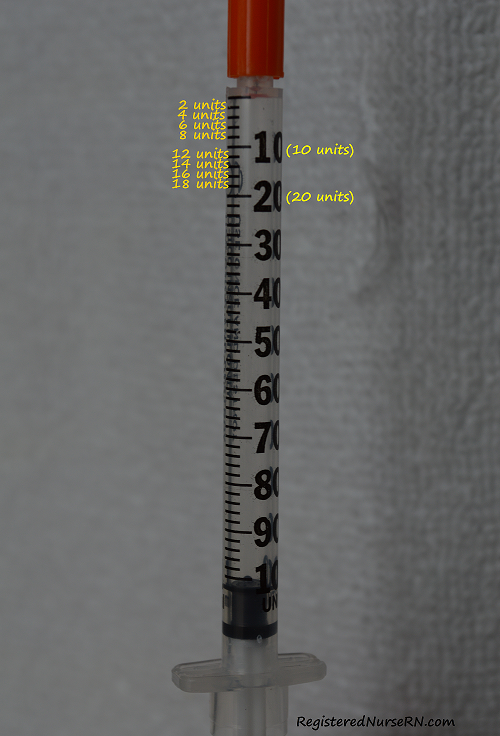
- TEST YOURSELF: How much is in this 100 unit syringe? (answer key below)

Answer Key
- 4.5 mL
- 2.2 mL
- 0.7 mL
- 0.25 mL
- 72 units